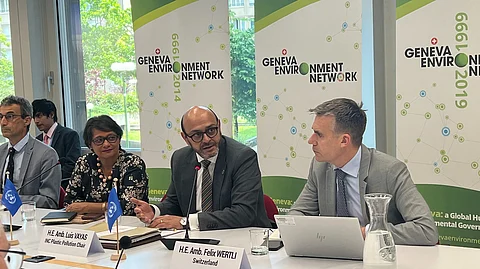

The preamble of the global plastic treaty is widely accepted, highlighting the urgent need for international cooperation to tackle plastic pollution.
While it captures the global challenge, countries are proposing refinements to better align with ambitious goals.
Developing nations stress equitable access to resources, while others call for differentiated treatment based on unique vulnerabilities and geographic factors.
The preamble sets the tone for the treaty and is generally well received across negotiating parties, reflecting shared recognition of the scale and urgency of addressing plastic pollution. It successfully captures the global nature of the problem and the need for coordinated international action. However, there remains room for refinement to align it more closely with the treaty’s ambitious goals. During negotiations, numerous countries and regional blocs have offered targeted proposals to ensure the text captures both universal challenges and distinct national or regional realities.
There is a shared acknowledgment that addressing plastic pollution requires not only environmental responsibility but also equitable global support mechanisms. Several developing nations, including members of the African Group, have highlighted the need for fair access to financial resources, technology, and capacity-building. Their emphasis on sustainable consumption and production reflects a broader call for systemic change in global material flows.
Small Island Developing States (SIDS), represented by Samoa and Vanuatu, sought specific recognition of their vulnerability to plastic pollution due to geographical and ecological factors. Their interventions underscored the danger of lumping all developing countries into a single category, arguing instead for differentiated treatment based on distinct exposure and capacity constraints. Similarly, countries like Bangladesh and Indonesia called for attention to geographic nuances, such as riparian or archipelagic status, that shapes national plastic waste management challenges. China and Japan encouraged language that acknowledged the functional role of plastics in modern society, advocating for a circular economy approach rather than outright vilification. Meanwhile, countries like New Zealand and the United Kingdom pointed to the need for science-based decision-making and a holistic view that includes public health, ecosystem impacts, and policy coherence.
Divergent views persist, particularly around whether the treaty should reflect differentiated responsibilities or focus more uniformly on shared commitments.
This is a click to zoom map. View the larger image by clicking on it